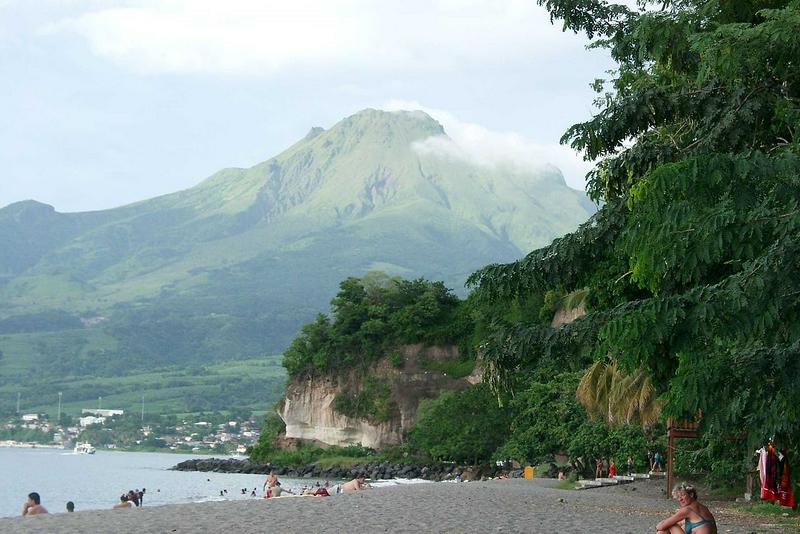The 1902 Eruption Of Mount Pelee
By | October 26, 2019

In May 1902, the town of St. Pierre was beset with a plague of biblical proportions. Hundreds of ants, giant centipedes, and snakes, including deadly pit vipers up to two meters in length, descended Mount Pelee and invaded the town. They attacked livestock and people alike, even managing to get into houses. According to some records, more than one hundred animals and fifty people were killed by the rampaging pests. This event was but one of many signs of a pending apocalypse. Admittedly, the eruption of Mount Pelee didn’t end the world, but it was the end of St. Pierre and most of its 30,000 residents.
Known as the “Paris of the Caribbean,” St. Pierre was located on the northwest coast of Martinique, just seven kilometers from Mount Pelee. In 1902, it was a harbor town, exporting sugar and rum, and was considered the cultural center of Martinique. Mount Pelee had been inactive since 1851 when it released a shower of ash along northern Martinique and was popular among hikers who enjoyed trekking to the crater at its summit.

The invasion of pests wasn’t the first sign that Mount Pelee was awakening from its slumber. It began in April 1902 with a string of tremors, clouds of sulfur flowing down the mountain, and the sudden appearance of a lake in the volcano’s caldera. The first small eruption occurred on May 2, sending lava rocks into the sky and killing birds and fish. People began evacuating the countryside and heading to St. Pierre which was reported to be safe. The nearby Rivière Blanche, which is French for “White River,” was also behaving erratically, sometimes overflowing and sometimes disappearing. But this was only the beginning.

The first deaths occurred on May 5 when massive lahar, which is the debris flow of mud and water, poured down the Rivière Blanche, destroying a sugar processing plant and killing almost two dozen people. The lahar continued on, dumping its debris into the ocean and causing a tsunami which flooded St. Pierre. Then came the snakes and insects. Soldiers attempted to protect the townspeople by shooting the snakes, but their bullets would be useless against the devastation to come.

Despite all of these warnings, including a lava dome forming in the mountain’s crater and the eruption of a volcano on the neighboring St. Vincent, which killed 1,500 people, the powers-that-be continued to tell residents they were safe. This was due in part to ignorance and in part to the fact that Martinique was in the midst of elections and evacuating St. Pierre would cost precious votes needed by the incumbents. Still, they could not have had any clue of the power that would soon spew from the mountain, otherwise, the governor would not have brought his family to St. Pierre as he did shortly before the deadly blast.

It happened around 8 a.m. on May 8, 1902. A cloud of hot gas and debris exploded from the mountain and gushed down its sides at speeds over one hundred miles per hour. Within minutes, St. Pierre was destroyed, its residents suffocated and burned. Among the few who survived was a prisoner named Louis-Auguste Cyparis who was protected by the walls of his poorly ventilated jail cell. After surviving the eruption, he went on to tour with the Barnum and Bailey Circus.

At the time of the eruption, geologists had limited knowledge of volcanoes. The cloud of gas which destroyed the city was beyond anything they’d witnessed. Today, this cloud is known as pyroclastic flow and it is the deadliest hazard of a volcano. While it is likely little consolation to those who lost their lives during the eruption of Mount Pelee, this event alerted scientists to the potentially catastrophic nature of an awakening volcano and, while there is no way to contain the power of a pyroclastic flow, one can hope they will no longer delay evacuation. With that being said, there are an estimated three thousand volcanoes in the world and only about one hundred fifty are being monitored for seismic activity.

